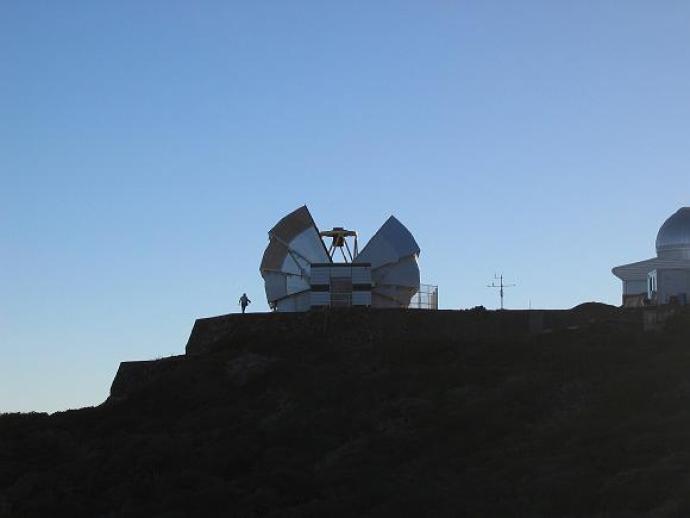An astronomical observatory is a place or building used to look at events in space. They can contain just one telescope, but some have more than twenty.
Observatories collect light from objects in space across the electromagnetic spectrum, such as optical, infrared, and radio.
Most telescopes have a domed roof with an opening for the telescope to see out of. These domes usually rotate so the telescope can view different parts of the sky.
The opening in the roof can be closed to protect the telescope from poor weather.

When choosing the location where these observatories should be placed, the main thought is getting clear images of objects in space. Some of these objects are hard to see in the night sky, even with a telescope! So astronomers want to collect as much light from them as possible.
They need to find a place for an observatory which is:
- Somewhere where the weather is good.
- Away from towns and cities to avoid light pollution.
- Somewhere where the Earth's air won't disturb the light too much.
Many places around the world which make great locations for an observatory. A lot of them are on mountains or islands. Some of the best sites in the world for observing are:
- Australia (Siding Springs)
- Chile (in the Atacama Desert)
- La Palma and Tenerife (in the Canary Islands)
- South Africa (Sutherland)
- USA (Texas, Arizona and Hawai'i)
But when deciding to build, people must think about more than just the weather at the site. For example, Mauna Kea or the White Mountain, on the island of Hawai'i, has been used for looking at the night sky since ancient times. It is an extinct volcano and home to one of the best observatories in the world.

The site is ranked the best in the Northern Hemisphere. It has dark skies free of street lights. The sea around the islands keeps the air stable, making the stars twinkle less. This makes the images much clearer. It is over 4,200 m high, which means it looks through 40% less atmosphere.
Yet Mauna Kea's use as a site for telescopes is strongly contested. The mountain is significant in Hawaiian culture. The first telescopes built there were done so without the agreement of the local people. New telescopes are still being placed on the site, though now at least in talks with local leaders.
When building observatories, careful thought must be given to their impact on local people, culture, and on science.
The ultimate place for an observatory is in space, without problems from the Earth's atmosphere, but this becomes very expensive!.
